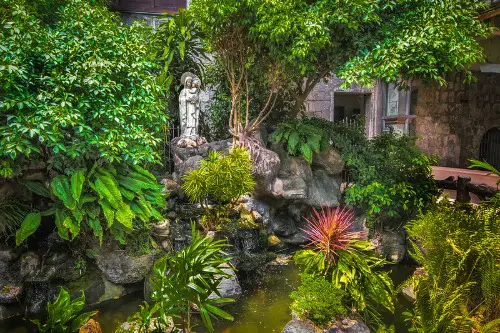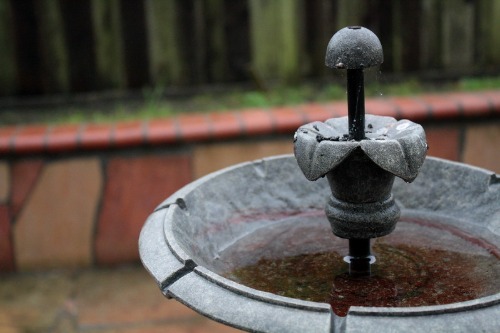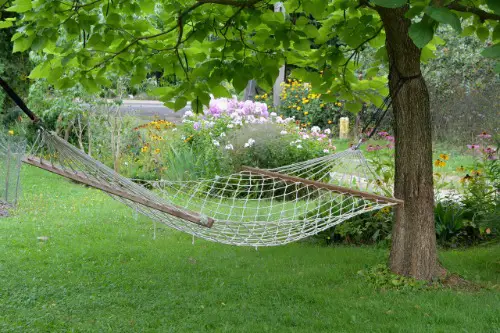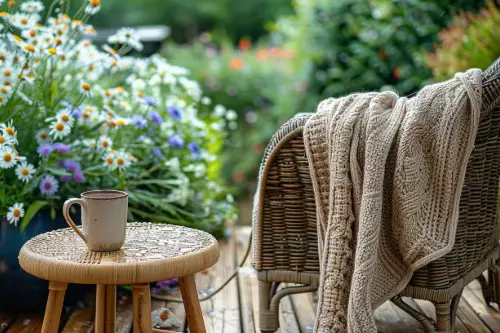1. Meditation Gardens

Meditation gardens are built with serenity in mind, offering spaces for reflection through minimal landscaping, soft textures, and flowing design. Elements like gravel paths, stone benches, and small water features create a physical and visual rhythm that helps quiet the mind. These gardens are designed for intentional slowness and sensory regulation, not just aesthetics. Even in small spaces, a simple arrangement of bamboo or moss can provide genuine emotional relief.
The best meditation gardens invite mindful presence rather than performance. You won’t find loud colors or crowded plantings—they favor order, simplicity, and stillness. Sounds like trickling water or rustling leaves deepen the experience. When life feels overwhelming, a garden built for quiet can guide you back to calm.
2. Labyrinth Paths

Unlike mazes, labyrinths are single winding paths designed to encourage slow, contemplative walking. As you trace their curves, your body finds rhythm while your mind lets go of mental clutter. These spaces are often integrated into lawns or paved with stones, forming spirals or gentle arcs. It’s movement that asks nothing of you but your attention.
Labyrinths serve as walking meditations and emotional resets. Even without spiritual intent, they can help regulate breathing and reduce anxiety. They’re grounded and quiet by design, resisting urgency and chaos. A 15-minute walk through one can offer more clarity than an hour in a noisy room.
3. Restorative Water Features

Trickling fountains, koi ponds, or reflecting pools add sensory depth that soothes nervous energy. The sound of flowing water masks urban noise and invites slower breathing patterns. Visually, rippling reflections and fluid movement offer nonverbal comfort. These features aren’t just pretty—they’re neurologically calming.
Placed near seating areas or tucked into shaded corners, water features foster moments of pause. They encourage emotional hydration in the same way they hydrate the landscape. Watching fish or subtle ripples can activate your brain’s default mode network, which is linked to daydreaming and decompression. Water heals best when it’s both moving and still.
4. Hammocks or Swinging Chairs

Gentle rocking motions, like those in hammocks and swing chairs, engage your body’s natural calming reflexes. This movement pattern—similar to cradling—is known to reduce stress hormones and induce relaxation. It’s one reason babies fall asleep being rocked—and why adults gravitate toward porch swings. Outdoors, these pieces become tools for emotional rhythm.
Placed under tree canopies or pergolas, they create quiet personal zones. Motion, when paired with nature, can be emotionally regenerative. Whether you’re reading, napping, or simply watching the wind, the gentle sway recalibrates your nervous system. You’re not just sitting—you’re decompressing.
5. Scent Gardens

Plants like lavender, mint, rosemary, and jasmine release oils that influence mood and mental clarity. Lavender, for example, lowers cortisol and improves sleep, while mint can help reduce mental fatigue. A small patch of fragrant herbs or flowers near a walkway becomes an aromatherapy experience. It’s olfactory design with intentional outcomes.
Scent gardens personalize calm by layering emotional cues into your surroundings. They offer recovery through inhalation, grounding memory with smell. Place them near windows, seating, or doorways to feel the benefits more often. This kind of landscape isn’t just beautiful—it’s medicinal.
6. Sunrise or Sunset Zones

Designating a place to watch the sunrise or sunset turns your yard into a natural mood booster. Exposure to low-angle light regulates circadian rhythm and helps combat depressive symptoms. These moments don’t require conversation or productivity—they encourage pure presence. It’s nature’s daily therapy, and it’s free.
Install a bench or create a small nook facing east or west with soft cushions or blankets. Pair it with warm colors, gentle textures, and open sky views. Even a modest space can deliver the psychological power of beginning or closure. Let your landscape hold the day’s transitions for you.
7. Grounding Zones with Natural Materials

Spaces designed for barefoot movement—grass, smooth stone, soft earth—help regulate internal stress. Known as “earthing,” this practice may reduce inflammation, improve sleep, and stabilize mood. These zones don’t need to be elaborate; just intentional. Connection through contact is primal and healing.
Grounding areas invite you to step out of your shoes and into sensation. Add a stretch mat, yoga pad, or just a place to sit and feel the ground. Even a few minutes on natural surfaces recalibrates your system. This is landscape therapy in its simplest form.
8. Quiet Nooks for Solitude

Tucked-away corners with seating or soft shade provide necessary escape. Whether you’re an introvert or just emotionally overloaded, solitude promotes regulation and repair. These areas aren’t for guests—they’re for you. Silence becomes design when it’s made accessible.
Shielded by hedges, trees, or fencing, these nooks can include cushions, journals, or even soft lighting. Let them be unscheduled, non-performative, and emotionally neutral. You don’t have to “do” anything there—you just get to be. Recovery starts when presence replaces performance.
9. Wildlife-Friendly Zones

Watching birds, butterflies, or bees invites small, spontaneous joy. Nature engagement—even for minutes—reduces rumination and boosts focus. These zones might include native plants, feeders, or shallow water sources. Their movement gives rhythm to still spaces.
Wildlife-friendly features create emotional connection without conversation. They ground you in the present and offer subtle companionship. A birdbath or pollinator garden isn’t just ecological—it’s therapeutic. Welcome the wild—it tends to know what you need.
This post 9 Outdoor Features Designed for Emotional Recovery was first published on Greenhouse Black.
